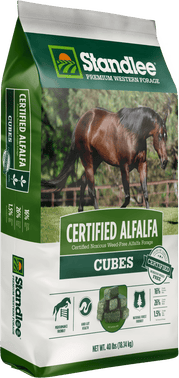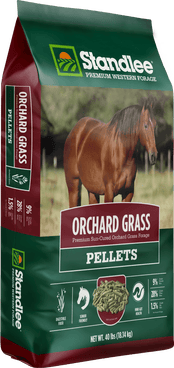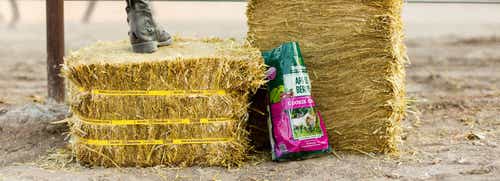
Summer Grazing For Your Horse: What You Should Know
Turning your horse out to pasture offers many great benefits. It is enriching for their minds, the frequent eating is great for their stomach, and it gives them the freedom to roam. In the Spring, it is essential that you slowly introduce your horse to the fresh grass and their new diet. As the weather begins to warm, the Summer brings changes to your fields that you should be aware of and plan for.
Is pasture alone enough?
There are many conditions that go into determining if pasture alone is enough for your horse. Some of these factors include the horse’s age, activity level, and the number of horses in the space.
In general, you need to have 2-4 acres of high-quality pasture available per horse, for full-time grazing. It is also important that you know the type of grass growing in your field, and if there is other foliage growing in that space.
One of the biggest challenges of pasture only feeding is knowing if your horse is eating enough. Horses will graze for an average of 16 hours a day. During this time, they will consume 16-30 pounds of grass. We recommend that you closely monitor your horse’s weight during their pasture season. You can do this with a measuring tape, taking pictures, and feeling their body for any weight changes.
It is also important to note that horses will still need to get their daily vitamin and mineral requirements, so it is recommended that you consult with your veterinarian to make sure your horses is getting all of the nutrients that they need.
Factors to consider for summer pasture
- Changes in the soil: Warm season grasses are prone to building up nitrates in the soil. At a highly concentrated level, this can be dangerous for your horse.
- Availability: The Spring weather provides a substantial growth of grass, weeds, flowers, and other foliage. As the rainfall decreases, so does this growth production. If you do not have access to multiple pastures for rotational grazing, it is likely that your grass is starting to get low or decreasing in quality.
- Access to shade: As it get’s warmer, horses will need access to more water and shade to prevent overheating. As noted in a previous blog, you can also prevent overheating with proper nutrition. During this season, it is important that you offer your horse quality forage and avoid feeding them overly mature grass or plants so that their digestive system is working most efficiently.
How long can horses be on pasture?
Your horse can stay on pasture 24 hours a day if their nutrients and needs are being met. Monitoring them for injuries, body condition, and providing them with routine care is still very important to their health and well-being.
Is pasture better than hay for horses?
This depends on the type of foliage being provided, the growth and maintenance of your pasture, and the horse’s needs. In many cases, pasture alone is not enough. Supplying your horse with the appropriate amount of high-quality forage is crucial for their health and performance.
Offering your horse soaked pelleted or cubed feed is a great way to ensure your horse is getting the nutrients they need as well as an additional way to offer them hydration in the warmer months.
Conclusion
A well-maintained pasture is a great way to offer your horse high-quality forage in their diet as well as exercise and socialization. Pasture feeding can provide 100% of your horse’s diet, if the conditions are right. It is important that you consider your horse’s activity level, how much space you have, the quality of the soil, and other factors such as climate, rainfall, and plant availability.
In many cases, your pasture can be enough for a couple of months out of the year; however, you will need to transition your horse back to high-quality hay and feed as the plant growth and quality in your field declines.
Resources:
- Kentucky Equine Research
- University of Minnesota Extension

















